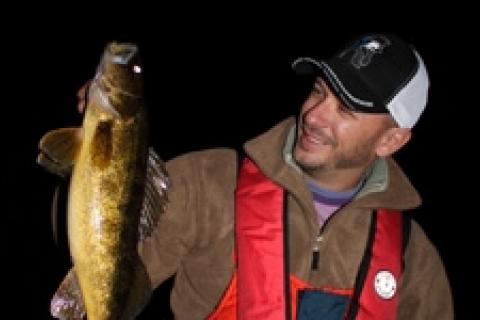
 The lake you choose will have a direct impact on your success at night. It can also be a factor in your safety. Pick a lake that you are comfortable with and one that you have fished in the past. Having a good knowledge of any given structure, as well as obstacles, is also well advised. It goes without saying that midnight forays are not a time to be testing out new water.
The lake you choose will have a direct impact on your success at night. It can also be a factor in your safety. Pick a lake that you are comfortable with and one that you have fished in the past. Having a good knowledge of any given structure, as well as obstacles, is also well advised. It goes without saying that midnight forays are not a time to be testing out new water.
Choose a lake that has close access points to areas you intend to fish. Launch ramps that leave only a short run to the fish are best, especially for the ease and safety they provide.
Get a Game Plan
Fish will often lurk in typical spots during the night, but one big magnet for many species is shallow water. Forage will flock to this skinny water once the moon comes out, and following close behind are larger predator fish.
Weed and sand flats are great choices for walleye, muskie, pike, and bass, especially if transitional points can be found.
River channels can be a hot bed of activity at night, as fish roam along weedlines picking off the abundant forage. With boat traffic non-existent, these often-busy thoroughfares can be a gold mine for any river fisher.
Rock points, humps and saddles are also excellent structure spots to find fish of the night. Any physical change in bottom composition, be it rock, weed or a mixture of both, make these areas all the more inviting.
Lure Selection
No matter what specie you plan to target, there are a few simple rules for selecting bait. Offering a fish a silhouette is your best bet for getting a strike. Since the sky will be lighter than the water — and as most fish feed upwards — the color black will be most visible and is a night time standard when it comes to fishing. Many old timers still recite the saying, "use any color at night you want, as long as its black."
Sound is also important at night, as fish utilize their inner ears and lateral line to detect motion and disturbances. This means noisy topwaters, rattling crankbaits or jigs with loud sound chambers will allow fish to key in on baits more easily.
Safety Comes First
- Always let someone know where you are fishing and approximately what time you will be home. If possible fish with a partner.
- Launch your boat as close to the areas you intend to fish.
- Ensure that boat running lights are working and keep them on at all times.
- Take a fully charged cell phone.
- Wear a life jacket or floatation suit.
- Keep a search beam on board as well as two flashlights and a headlamp.
- A landing net, pliers, and bolt cutters should always be on deck.
- A GPS unit can help you find the launch in bad weather, or if you get disorientated. A compass should also be on board in case of an electronic failure.
- Whistle and flares should be part of your safety kit.
- Orientate yourself with the water during daylight hours before venturing out at night. If you have on board electronics, waypoint any hazards or obstacles, as well as fishing areas you want to try.
- Stick close to shore until you feel comfortable and capable.
- Bring bug repellent and a first aid kit.
- Keep an extra set of clothes on board in case you or your partner fall in.
- Always check weather forecasts before heading out.
- Ensure that gas tanks and batteries are full and fully charged.
- 2843 views

